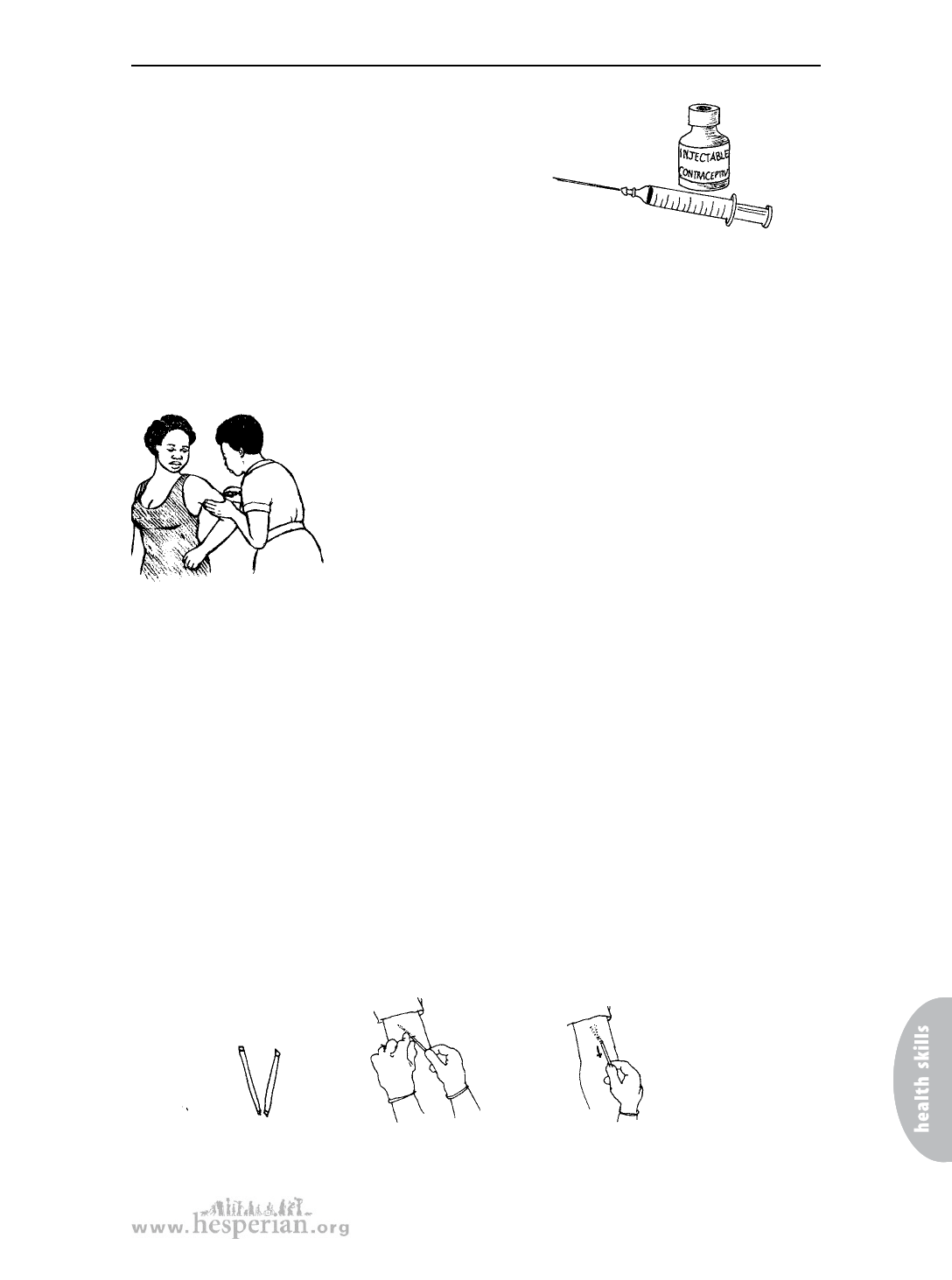
Choosing a family planning method
Injectable contraceptives
With this method, a health worker gives a woman a hormone
shot to keep her from getting pregnant. One
shot lasts 1 to 3 months.
Injections are very effective. Very few women who
use this method become pregnant. Another advantage to this method is
that a woman does not have to do anything before having sex. And no one except
her health worker needs to know she is using a family planning method.
The disadvantages are similar to those for birth control pills — some women
have weight gain, sore breasts, nausea, or unusual monthly bleeding. Many
women who have injections have no monthly bleeding at all. These effects are not
dangerous, but they may be uncomfortable. Another disadvantage is the woman
must go to a health worker once every 1 to 3 months
to get the injection. And like other hormonal methods,
injections do not protect against HIV or other STIs.
Most injections contain only progestin. Depo Provera
and Noristerat are the most common brands. These
injections are safe to use while breastfeeding, and are
safe for other women who should not use estrogen
(see page 306).
Some injections contain estrogen, but they cost more and are hard to find.
They must be injected once every month. A woman using these injections will
usually have a normal monthly bleeding.
When a woman stops getting injections, it may take longer than usual (as much
as a year or more) for her to get pregnant. Women should always be told this
before getting injectable contraceptives. For this reason, injections are best for
women who are sure they do not want to get pregnant in the next year or more.
Implants
With this method, a trained health worker puts small, soft tubes of progestin
under the skin of a woman’s arm. The implant then prevents pregnancy for
3 to 5 years, depending on the type of implant. The implants must be replaced
after those 3 to 5 years are over. If a woman wants to get pregnant before that
time, the implant must be removed by a health worker.
Implants
Implants are put
under the skin . . .
. . . and can be removed
by a trained health worker.
A Book for Midwives (2010)
309